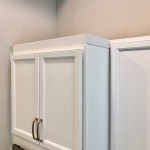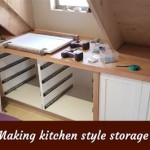How Thick Are Kitchen Doors?
The thickness of kitchen doors is a crucial factor influencing their aesthetic appeal, structural integrity, and overall performance. While there isn't a single standardized thickness, a common range exists within which most kitchen door manufacturers operate. Understanding this range, the factors that contribute to variations, and the implications of different thicknesses is essential for homeowners, kitchen designers, and contractors involved in kitchen renovation or construction projects.
Generally, kitchen doors range in thickness from approximately ¾ inch (19mm) to 1 inch (25mm). This range represents a balance between cost-effectiveness, structural stability, and compatibility with standard hardware components like hinges and handles. However, variations exist depending on the door material, design, and the manufacturer's specifications.
The ¾ inch thickness is a very common and frequently used dimension, often preferred for its affordability and ease of manufacturing. Doors of this thickness generally provide adequate structural support for most standard-sized kitchen cabinets and are compatible with a wide variety of hinges and handles. Doors approaching the 1-inch thickness offer a more substantial feel and can accommodate more elaborate designs or heavier materials.
It is important to note that specialty doors can fall outside this typical range. For example, particularly large or heavy doors might require a greater thickness for enhanced stability. Similarly, doors made from certain materials like metal or glass might necessitate different thicknesses to achieve the desired aesthetic or functional properties.
Factors Influencing Kitchen Door Thickness
Several factors influence the selected thickness of kitchen doors. These factors often interact to determine the optimal thickness for a given application.
Material Composition: The material used for kitchen doors significantly affects the required thickness. Solid wood doors, for instance, may require a greater thickness than doors made from engineered wood products like MDF (Medium-Density Fiberboard) or particleboard. Solid wood is susceptible to warping and requires adequate thickness to remain flat and stable. MDF and particleboard, while less prone to warping, might still require a specific thickness to provide adequate screw retention for hinges and handles.
Different types of wood also possess varying densities and strengths. A door constructed from a hardwood like oak or maple may not require the same thickness as a door made from a softer wood like pine to achieve comparable structural integrity. Similarly, different grades and densities of MDF and particleboard necessitate varying thicknesses to ensure adequate strength and durability.
The use of overlays or veneers on cabinet doors also plays a role. A thin veneer will have little to no impact on the required core thickness of the door. However, if the door is made of a thinner core material and then a thicker overlay or veneer is added, this will affect the overall "thickness" of the door, which may be a relevant factor depending on the design and aesthetics of the kitchen.
Door Style and Design: The design and style of the kitchen door also influence the required thickness. A simple, flat-panel door may require a thinner profile than a more elaborate door with raised panels, decorative moldings, or intricate carvings. The presence of these design elements necessitates a thicker door to accommodate the additional material and detailing without compromising structural integrity.
For example, Shaker-style doors, characterized by their recessed panel design, typically require a thicker frame to create the recessed area and provide sufficient support for the panel. Similarly, doors with applied moldings or decorative elements require a thicker substrate to securely attach these embellishments.
The overall size of the door also plays a role. Larger doors require a greater thickness to prevent sagging or warping. Tall pantry doors or wide base cabinet doors are more susceptible to these issues and thus commonly utilize a thicker profile.
Hardware Compatibility: The selected thickness of kitchen doors must be compatible with the chosen hardware components, including hinges, handles, and drawer slides. Standard hinges are designed to work with doors within a specific thickness range. Using doors that are too thin or too thick can compromise the functionality and durability of the hardware.
For instance, using a door that is too thin can result in inadequate screw retention for the hinges, leading to loose or unstable doors. Conversely, using a door that is too thick can prevent the hinges from closing properly, causing alignment issues and potential damage to the cabinet frame. Similar to hinges, handles are also designed for specific door thicknesses. Using handles that are too long or too short can compromise their functionality and aesthetic appeal.
The type of hinge chosen will also have an impact on required thickness. European style, also known as concealed hinges, are generally mortised into the back of the door itself, where as a surface mount hinge may not require as much door thickness. It is essential to consult with the hardware manufacturer to ensure compatibility between the chosen hardware and the door thickness.
Implications of Different Door Thicknesses
The thickness of kitchen doors has several implications for cabinet design, aesthetics, and functionality.
Structural Integrity and Durability: Thicker doors generally offer greater structural integrity and durability. They are less prone to warping, sagging, or damage from impact. This increased robustness is especially important for high-use kitchens or in environments where the doors are subjected to frequent handling or potential abuse. While thicker doors may seem like a preferable choice, it is essential to consider the overall cabinet construction and the weight-bearing capacity of the hinges and cabinet frame. Excessively thick and heavy doors can strain the supporting structure, leading to premature wear and tear.
Aesthetic Considerations: The thickness of kitchen doors affects the overall aesthetic of the kitchen. Thicker doors can convey a sense of solidity and quality, contributing to a more luxurious or high-end appearance. Conversely, thinner doors can create a more minimalist or contemporary feel. The selected thickness should complement the overall design style of the kitchen and align with the homeowner's aesthetic preferences. The edge profile of the door, often referred to as the door's "edge banding", can also influence how thick or thin the door appears. A door with a sharp, defined edge will appear thinner than one with a rounded or beveled edge, even if the cores of the doors are the same thicknesses.
Cost Implications: Door thickness is a contributing factor to the overall cost of kitchen cabinets. Thicker doors typically require more material and more complex manufacturing processes, resulting in higher production costs. Homeowners should consider their budget constraints when selecting the door thickness and balance the desired aesthetic and functional benefits with the associated cost implications. Opting for doors within the standard thickness range can often provide a cost-effective solution without compromising significantly on quality or durability. However, if specific design requirements or performance demands necessitate a thicker door, it may be worth the additional investment.
The chosen thickness of kitchen doors is a vital decision impacting numerous aspects of a kitchen remodel or construction. Balancing factors like material composition, door style, hardware compatibility, and budget considerations is essential in selecting the optimal thickness to ensure a kitchen that is both aesthetically pleasing and functionally sound.

European Oak Kitchen Cupboard Doors Shaker Style Many Sizes 20mm Thick

Onestock Unfinished Maple Shaker Cabinet Door Front Replacement 19 25w X 23h Ready To Paint Or Stain Solid Wood

Full Height Door Base Cabinet Bfhd42 Unfinished Kitchen Cabinets

Horton Shaker Dust Grey Cabinet Doors Moderne

Interline 2478226 12 X 30 In Hampton Wall Cabinet Oak

Plywell Ready To Assemble 21 In X 34 5 24 Shaker Base Cabinet With 1 Door And Drawer Espresso Sexb21

Fenwick Shaker Kitchen Door Light Grey Moderne

How Thick Are Kitchen Cabinet Doors Creative Blog

Traditional Kitchen Cabinets

Replacement Kitchen Doors Amalfi White Cabinet
Related Posts








